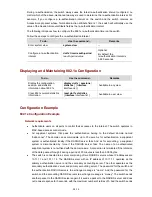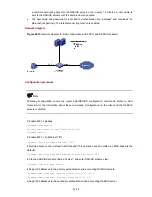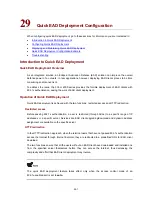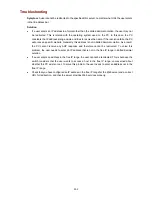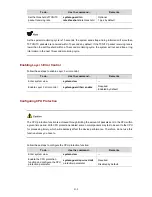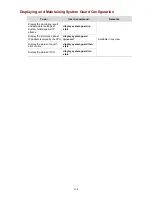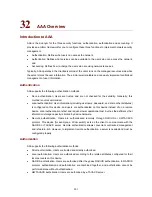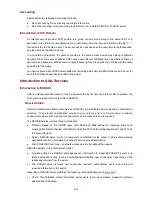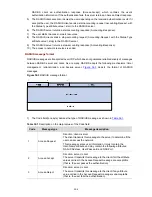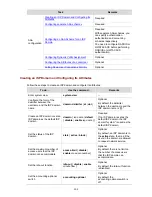
32
AAA Overview
Intro
onym for the three security functions: authentication, authorization and accounting. It
ctions to implement network security
z
ntication: Defines what users can access the network,
ess the network,
/server model: the client runs on the managed resources side while
the server stores the user information. Thus, AAA is well scalable and can easily implement centralized
r information.
Auth
AAA
ication methods:
z
n this device instead of on a remote
z
server. Remote authentication allows convenient centralized management
and is feature-rich. However, to implement remote authentication, a server is needed and must be
red properly.
Auth
A
z
trusted and directly authorized.
z
RADIUS authentication. In RADIUS
authorization cannot be
performed alone without authentication.
ACACS authorization: Users are authorized by a TACACS server.
duction to AAA
AAA is the acr
provides a uniform framework for you to configure these three fun
management.
Authe
z
Authorization: Defines what services can be available to the users who can acc
and
z
Accounting: Defines how to charge the users who are using network resources.
Typically, AAA operates in the client
management of use
entication
supports the following authent
z
None authentication: Users are trusted and are not checked for their validity. Generally, this
method is not recommended.
Local authentication: User information (including username, password, and some other attributes)
is configured on this device, and users are authenticated o
device. Local authentication is fast and requires lower operational cost, but has the deficiency that
information storage capacity is limited by device hardware.
Remote authentication: Users are authenticated remotely through RADIUS or HWTACACS
protocol. This device (for example, a 3Com switch) acts as the client to communicate with the
RADIUS or TACACS
configu
orization
AA supports the following authorization methods:
Direct authorization: Users are
z
Local authorization: Users are authorized according to the related attributes configured for their
local accounts on this device.
RADIUS authorization: Users are authorized after they pass
protocol, authentication and authorization are combined together, and
z
HWT
32-1

